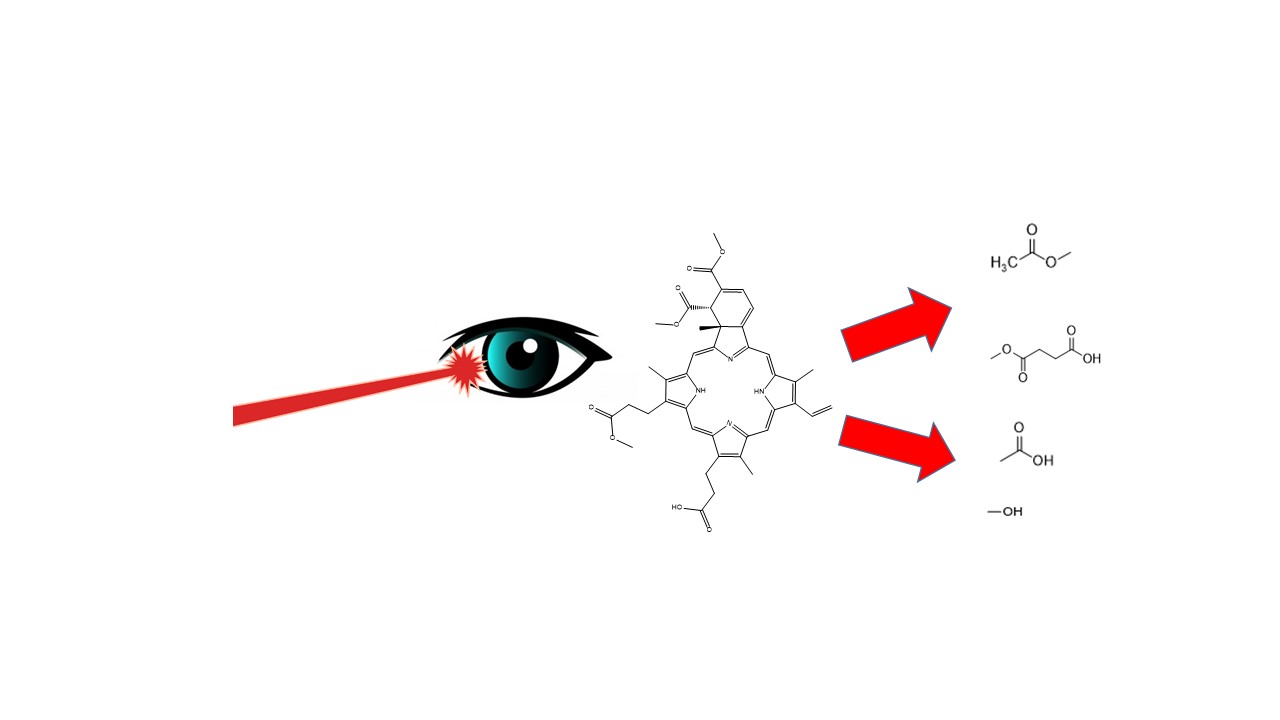Verteporfin, a free base benzoporphyrin derivative monoacid ring A, is a photosensitizing drug for photodynamic therapy (PDT) used in the treatment of the wet form of macular degeneration and activated by red light of 689 nm. Here, we present the first direct study of its photofragmentation channels in the gas-phase, conducted using a laser interfaced mass spectrometer across a broad photoexcitation range from 250-790 nm. The photofragmentation channels are compared with the collision-induced dissociation (CID) products revealing similar dissociation pathways characterized by the loss of the carboxyl and ester groups. Complementary solution-phase photolysis experiments indicate that photobleaching occurs in verteporfin in acetonitrile; a notable conclusion, as photoinduced activity in Verteporfin was not thought to occur in homogenous solvent conditions. These results provide unique new information on the thermal break-down products and photoproducts of this light-triggered drug.

